Living Planet
Nature · Earth · ClimateNature Notes: November 2021
THE MIGHTY OAK
'Rap tap-a-tap tap, rap tap ...' The repetitive gentle knocking that seemed to be coming from above, turned out to be a blue tit, perhaps the same one from April who had pecked so vigorously at his reflection in my downstairs window, who was now trying to get into my bedroom. By the time I ascended, he had let himself in through my open window and was flying around with the pieces of blue cloth from the spine of an old book in his beak!
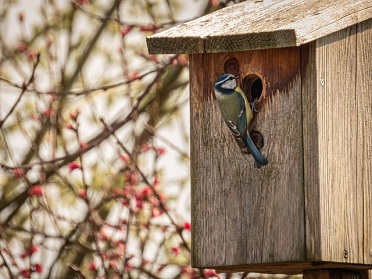
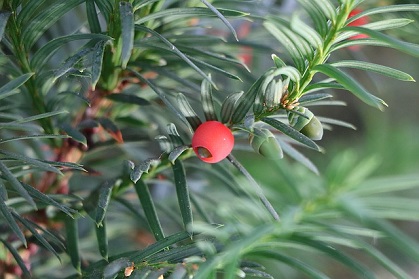
Although still balmy as I write in mid-October, with dragonflies, butterflies and midges still on the wing, this is the time of year when garden birds check out nest boxes for shelter in advance of winter, and when I let him out, this one flew straight into the foliage of the yew tree where one such box is in situ - he was obviously making it cosy! It was the morning after a night of really torrential rain which had seen our rivers dramatically spill their banks, and as the dawn had begun to slowly shed a similarly watery and silvery, reflective light, I had made out a pair of very ruffled and bedraggled collared doves, snuggled on the edge of the same yew tree's dark branches, bobbing on a raft of red berries, who'd obviously spent the night there sheltering. My resident Robin was more perky, singing from his perch having left blobs of dark red jelly on my back gate after discarding the berries flesh and wiping the seeds clean before eating them for breakfast.
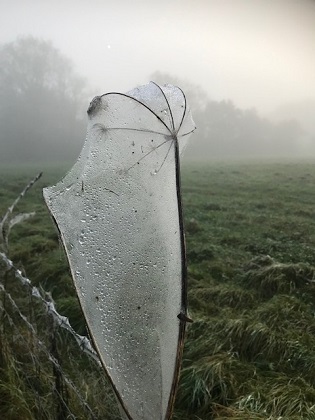
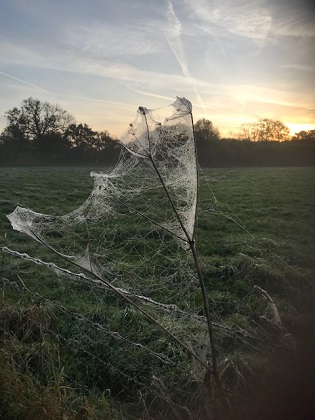
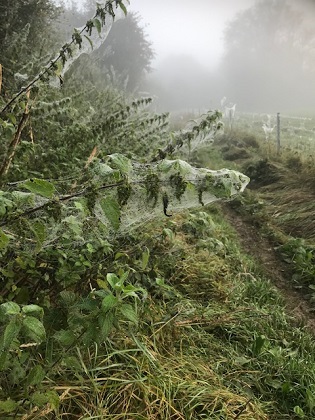
Most mornings since, the landscape has carried an almost fairy-tale like quality. Through clear nights and misty mornings, twilight's soft dew has carried shrouds of white towards the dawn. Fine cobweb's strung across paths often tickle my nose, telling me I'm the first to go that way. In the fields, dried golden seed vessels of Cow Parsley, ensnared by webs full of spiders create beautiful, sculptural shapes, along with green long, nettles, sheathed like wands. Toadstools, angled like satellite dishes perhaps pick up the cries of flocks of migrating birds over-head whilst the 'manna' sprinkled on my lawn at home are really tiny, weeny mushrooms only a couple of mm big, and the equally 'mini' acorns are instead the remains of female yew flowers from the spring which have become brown and similarly shaped with age.
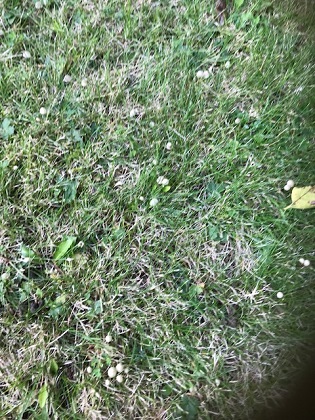
.jpg)
The serious lack of proper oak acorns this year, not just in Slinfold, but across the UK and Scandinavia has seen flocks of jays migrating eastwards in search of food. April's heavy rains meant many oak flowers were unable to pollinate so last year's 'mast' has become this year's 'fast'. Those Jays who are around, and in a good year can each amass and collect as many as 5000 acorns which they 'cache' amongst fallen leaves, have had to adapt their diet, as have badgers, mice, deer, rabbits, squirrels and other birds which feast on them. I've notice Jays at the bird feeder and gleaning corn alongside pheasants instead. Squirrels too, have had to widen their jaws as well as their menus, I saw one running off with an almost tennis-ball sized spiky sweet chestnut shell in its mouth!
As well as providing food (and homes) for wildlife, over the centuries the fruits of oak trees have been used as medicines to cure a wide variety of ailments and, when needed, to make porridge, bread and coffee substitutes, but did you know that perhaps just ONE in a THOUSAND of their seeds, (their bases, held safely in a snug cup of tenderness, as they fall from their parent in October) actually germinates, let alone grows successfully to become a tree? And whilst most oak trees won't produce a good crop of acorns until they are around 50 years old we are lucky to have some mighty oaks around our village which are a good deal older. Some can grow up to 45m tall and can spread almost as wide - I've seen some of the incredible 1,000 year old oaks at Cowdray with really huge girths - which, knowing their age, makes more believable the statistic that over the course of its life, one single oak tree can produce as many as 10 million acorns!
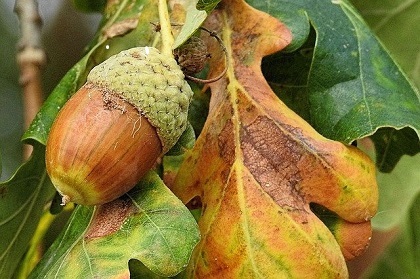
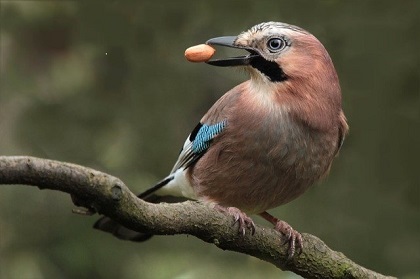
Oak trees are vitally important to our wildlife, supporting more life forms than any other tree native to the UK. Nearly 300 insect species have been found living in them, including some of our rarest butterflies such as the sap loving Purple Emperors and Purple Hairstreaks high up in their canopies - whose caterpillars feed on the flowers and leaf buds. A variety of different ladybird species take shelter in the ridges of their bark, many varieties of bats roost in their crevices and birds such as Nuthatches, Tree-creepers, Marsh tits and Greater Spotted Woodpeckers nest in holes in their trunks. Marsh Tits have also been seen hiding honeysuckle seeds in the lichen growing on their 'skin'. Even our oak's fallen leaves support a wide variety of biodiversity. As the leaves finish transforming through their current mini kaleidoscope of green/yellow/gold and rust and fall to the floor in November and December, they stimulate the growth of mushrooms and toadstools beneath. As they break down they form a rich, leaf mould supporting invertebrates such as stag beetles and fungi, like the Oakbug Milkcap.
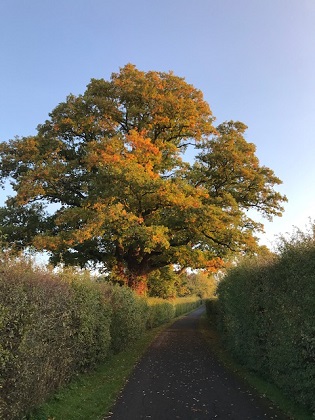
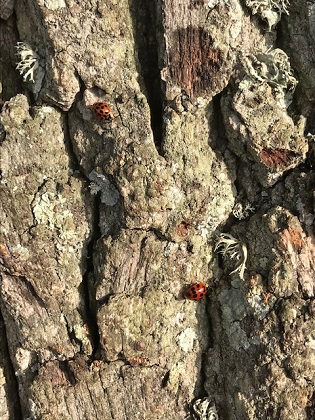
With COP26 happening this month, it's important to mention the carbon-locking qualities of our trees which are crucial in the fight against climate change. As I write, a recent giant outdoor experiment in the UK has shown that mature oak trees will increase their rate of photosynthesis by up to a third in response to the raised CO2 levels expected to be the world average by 2050!
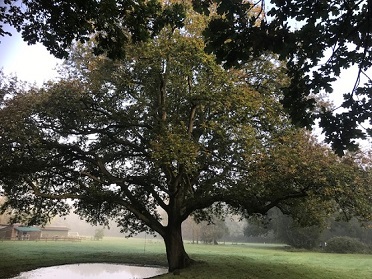
Some ecologists argue that individual oaks should be designated nature reserves in their own right. Whilst oak trees are often a personal reminder for none of us to give up when things get tough and that often great things me from small beginnings, it's also worth marvelling that each amazing oak is the result of just one acorn surviving against all odds. I believe that each and every 'oak eco-system' in our village should be protected and with it every single life-form that lives on it, in it, above it and beneath it. In England, the oak is a national symbol of strength and long may it last ...